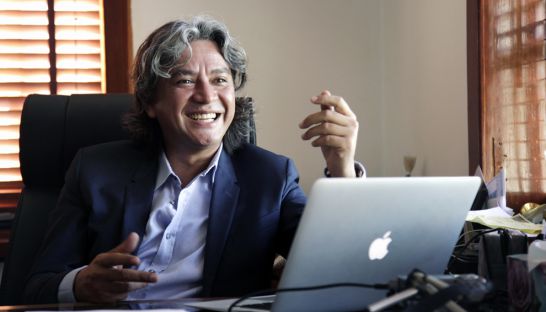Attracting $2.5 billion of foreign investment during the first half of this year alone, Cambodia’s construction sector has been repeatedly flagged as the next growth engine for the Kingdom’s economy.
However the boom has fuelled fears of a “construction bubble” and investment volatility. Thierry Loustau is the managing director of construction firm LBL International. With 250 projects completed over the past 22 years, Loustau is well aware of the challenges facing the sector.
Is construction Cambodia’s next big engine for growth?
It is definitely true. We have seen, after 22 years, all the ups and downs that have happened in this country. Over the past five or six years, however, construction has really boomed and I do not see any reason that it won’t continue for at least a couple more years. Mainly, this growth is clearly seen in Phnom Penh. This city is growing in a vertical way, and I cannot decide whether this is good or not, but it is certainly the trend.
What then is your ideal vision for Phnom Penh?
I guess it would be to keep the historical parts of Phnom Penh – I really think it is a jewel of Asia. Equally, I think the infrastructure has not yet been done to support this kind of high-rise development. I would prefer that the historical parts stay the way they are and new developments, instead, sit just outside of the central area.
In Bangkok, for example, the financial district has been built outside of the historical parts of the city. And that was really pushed forward by the city’s development of infrastructure and public transport. I think that would be a nice solution for Phnom Penh instead of this congested historical centre.
Do you fear a bubble is looming for Cambodia’s construction industry?
I don’t foresee any bubble. What Phnom Penh is seeing is a normal trend for any Asian city and we are so, so late to start moving on construction that there will be room for more development for a while to come. We have talked about this “bubble” for a very long time – years even. I remember several years ago when many people were building Chinese-style townhouses everywhere, people were saying, “Oh this will cause a bubble. Who will be living in all these places?” But today we discover everything is full.
Today, yes, sure, we can see some projects are struggling as everything builds up. But I must say that if something is done well, it will do well. It is like the restaurant industry – if it is a good restaurant, it will survive.
Where is all the money for this construction coming from?
In the beginning we were working mainly with foreign investors. After 1998-2000 there were a lot more local developers. But today, I would say conservatively that we work with an equal share of both local and foreign developers. The majority of foreign developers are regional players – of course, we are in Southeast Asia so it is quite normal that most of the investment comes from China, Korea, Japan, Malaysia and Singapore.
It is important to have good, reliable companies coming in. Investors today, compared to six years ago, are big, publicly-listed and experienced firms like Oxley, Hong Kong Land or Parkson. These are serious people who are here for the long term.
Is there a shortage of skilled workers in construction?
There are two elements to this discussion; the engineers and architects, and then the wider labour force. I must say that at the level of engineers and architects, I have never had a problem finding qualified staff here in Cambodia.
For the work force, I can say now that I have no complaints either. I really think this is only a question of supervision. We all have the same workers in the region – Myanmar, Thailand, Vietnam, etc.
We cannot say that Cambodians aren’t as good or are less productive. The only thing for us is supervision of the workers and making sure the projects and the workers are moving in the right direction
at the right pace.
In terms of numbers, at first when construction really started to kick off, yes it was a bit difficult to find enough staff at certain times – we would operate with about 30 per cent less workers than we needed. But more recently, as workers are returning from Thailand, I can say that we have absolutely no more problems to find the workers we need.
And what about the safety of the workers? Who is responsible for improving that?
We do need industry-wide rules and laws first and then enforcement to make sure they are being followed across the board. Investors also need to make sure they are adopting best practices. But we need to go step by step. Not be too ambitious in the beginning and start with basic safety precautions, otherwise this could affect badly the construction sector with discrimination on some companies following standards and some not.
This interview has been edited for length.
Source: Phnom Penh Post

